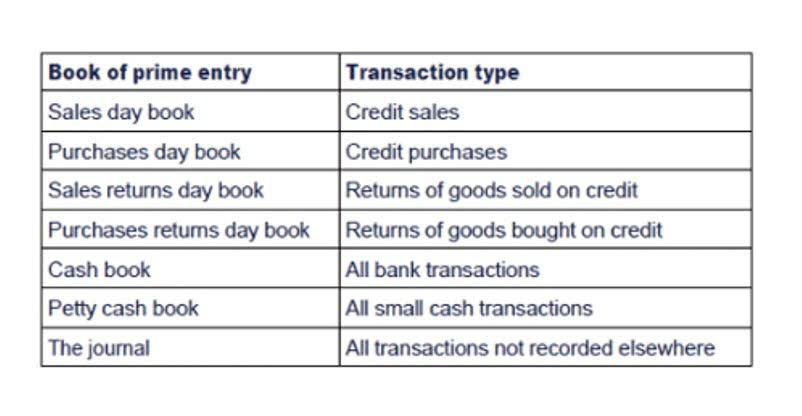
This article is the ultimate guide for construction lien waivers including essential information and… We are a subcontractor and the GC we are working for is asking us to sign and notarize progress payment line waivers for amounts they have not paid us for, is this legal? They are 60 days behind on our payment yet they are refusing to give us… This clears the retention receivable account and moves the amount to accounts receivable, where it can then be paid.

Accounting for Retention Receivable & Payable: A Contractor’s Guide
Some states even limit the amount of money that can be retained, and some might require it to be held in escrow. The specifics of each job’s retainage, including the rate of holdback and payment schedules, should be clearly detailed in the contract agreement. You can also look into subcontractor performance bonds or retainage bonds as a unique alternative to traditional retainage. Subcontractor performance bonds are a special agreement between a subcontractor and a surety. In this agreement, the surety guarantees to complete the project in place of a subcontractor should the subcontractor fail to meet contractual obligations.
What does retainage mean in construction?
Accounts receivable includes amounts due from clients of $234,000 at December 31, 20X1 that have been retained pending the completion of contracts and customer acceptance of deliverables. Retentions are usually due 30 days following the completion of a project and acceptance by the customer. Now, when you generate an invoice for a progress retainage accounting payment, you can add Retainage as a line item. QuickBooks doesn’t have an option to calculate a percentage, so you will need to calculate the retained amount manually.
What are the generally accepted accounting principles (GAAP) regarding retainage payable in construction?
When the project is complete, Paul’s invoices ABC for $5,000 in retention. This is recorded as a debit to the retention payable account and a credit to accounts payable. Once the project is complete and you’re billing your customer for the retention that was held throughout the project, the amount then moves from retention receivable to accounts receivable. When retention is subtracted from the invoice, the amount held is recorded as retention receivable. Finally, when parties have agreed to retainage, it is vital that general and subcontractors plan for less upfront income throughout the project.
- In this article, we’ll discuss everything you need to know to handle retainage in your next contract with confidence.
- The longer that takes, the more money ACME will need to keep their business going.
- Front loading a schedule of values is one way contractors and subs attempt to ensure steady cash flow, but there…
- This practice safeguards against incomplete work and defective workmanship, promoting accountability in project execution.
- Retention can be withheld on residential or commercial projects and on both public and private projects.
- Second, it’s abused by holding money too long or withholding high percentages.
Retainage and the Cash Flow Impact

Retainage had its genesis in the 1840s in the UK when the country was taking on the immense task of building a massive new railroad system. No one had ever tried such a project before; resulting in an unprecedented demand for labor. Looking to fill this demand, project owners had no choice but to bring on large amounts of inexperienced workers and contractors. As a result, many projects failed to meet expectations or weren’t finished at all.
- When you’re entering into a contract for a project where there will be money withheld, make sure you examine the terms to find out everything you possibly can about how the retainage will work.
- If a contractor or subcontractor fails to complete the work as agreed, the owner or general contractor can approach the surety company for compensation.
- This post covers the certified payroll requirements for contractors working on federal construction projects.
- According to Mehdian, a lot of contractors don’t record retention receivable or payable, especially those using Quickbooks accounting software.
- To manage these disputes effectively, it is essential to have a clear understanding of the retainage terms and conditions outlined in the contract.
Understanding your rights and the legal framework surrounding retainage can help you navigate these challenges more effectively. The steps required in a project’s journey to completion are importation to how successful the project will be. With a proper dispute resolution clause in place, contractors, subs, and suppliers can avoid taking their disputes into litigation. I am reviewing a schedule of value for a project that does not have a % of the project total assigned to project closeout.
Legal Limitations on State/County or Municipal Public Works Projects

This financial tool is a guarantee from a bank that a contractor’s obligations will be met. The issuing bank promises to cover the amount of retainage if Food Truck Accounting the contractor fails to complete their contractual duties. The primary advantage of a letter of credit lies in its ability to secure an agreement backed by a bank’s creditworthiness, which often instills greater confidence compared to a standard retention agreement. Managing retainage receivable efficiently is vital for the financial health of construction projects. With the emergence of advanced management tools, stakeholders can ensure accuracy and timeliness in their retainage transactions.
Recording & Tracking Retainage Receivable: QuickBooks for Contractors
- Clearly outline roles and responsibilities for all parties involved, ensuring everyone knows what you’re agreeing to.
- Lastly, you’ll want to double-check you’re accurately accounting for retainage in your billing and invoice process.
- Likewise, retainage receivables move to accounts receivable when billed.
- By adjusting the percentage, you manage your cash flow and risk exposure, ensuring the withheld amount aligns with project complexities and contractor reliability.
Bear in mind, that your construction business’s financial health pivots on effective accounting for retainage management. CCA is here to assist with all your bookkeeping needs, including understanding the intricacies of construction retainage accounting in the construction industry. Based on this, retainage receivable accounts will reflect as a debit balance, and retainage payables will show as a credit. Mechanics liens are the most powerful tools available to construction companies to secure all of their payments, including withheld retainage. If you want to find out more about how mechanics lien rights can help your company, get in touch with us, or just go forward to file your lien online now. On top of that, the margins in the construction industry are notoriously slim.
Add Retainage to an Invoice
Retention, also called retainage, is money held back from each payment to ensure that a contractor or subcontractor completes a project. It provides a financial incentive to ensure that the work is of appropriate quality and meets the plans what are retained earnings and specifications. It is intended to cover additional expenses if the contractor or subcontractor doesn’t finish the work or there is a quality issue.
54 total views, 1 views today